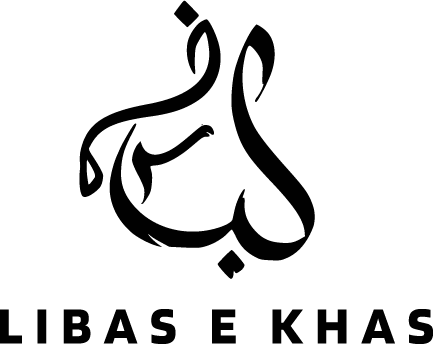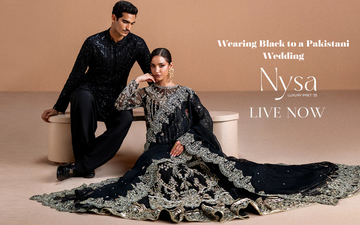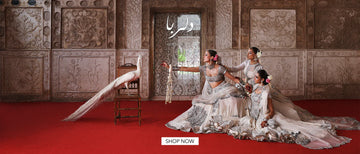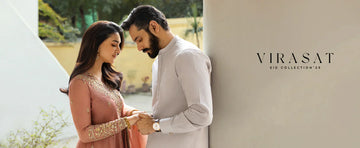Pakistani weddings blend color, music and tradition, yet many guests hesitate to wear black because it is linked to mourning and can clash with festive reds, greens and golds. Modern designers have shown that black can fit into wedding celebrations when styled thoughtfully with embroidery and rich fabrics.
To pull off black successfully, match your outfit to the event and its timing. Reserve full black ensembles for evening occasions like Valima or night Baraats, and choose luxurious fabrics such as velvet, brocade or silk with gold or pastel detailing. For daytime events like Mehndi or Nikkah, use black as an accent—in dupattas, embroidery or accessories—alongside brighter traditional hues.
This guide cuts through confusion by explaining cultural color meanings, outlining event-specific dress advice and offering styling tips. Balance heritage customs with contemporary design, and black will shift from a risky choice into a polished, elegant option for any Pakistani wedding celebration.


The Evolving Story of Black in South Asian Fashion
Black has long symbolized mourning in South Asian cultures, where Hindu and Muslim traditions favor subdued hues during bereavement. Weddings in Punjab, Sindh, and Bengal typically showcase vibrant reds, marigolds, and emeralds to represent joy and prosperity, leaving black largely absent from bridal ceremonies. In contrast, Western and East Asian formalwear have historically embraced black as the ultimate symbol of elegance.
The 20th century saw these boundaries dissolve as Bollywood and leading South Asian designers began showcasing black in wedding couture. Cities like Mumbai and Lahore popularized black lehengas and sherwanis adorned with zari, sequins, and gemstone work.
While regions such as Kerala held fast to white-and-gold traditions, urban centers like Karachi welcomed black’s fusion of Eastern craftsmanship and Western silhouettes.
Today, black occupies a sophisticated niche in Pakistani wedding attire. Understanding its journey—from a color of solemnity to a canvas for intricate craftsmanship—allows you to wear black thoughtfully. By pairing rich fabrics and ornate embellishments with traditional accessories, you can honor cultural heritage while making a modern, elegant statement.
The Evolving Landscape: Modern Acceptance of Black
Influence of Global Fashion Trends
Over the past few decades, Western “black-tie” formality has permeated South Asian design, shifting black from a color of solemnity to one of sophistication. Diaspora designers have played a key role: London‐based Osman Yousefzada—hailed by Vogue as the “re-inventor of the Little Black Dress”—introduced sleek black silhouettes imbued with South Asian embroidery and drape, proving noir’s adaptability beyond Western contexts. Simultaneously, award-winning Pakistani couturiers like deep‐textile maven Sania Maskatiya have incorporated black velvet and satin into their formal collections, pairing traditional zardozi and got a work with midnight hues to craft garments that resonate on global runways as well as local mehndi stages.
Changing Societal Views
Younger generations in Pakistan and its diaspora are rejecting rigid color codes in favor of personal expression. Social media platforms and PFDC fashion weeks have spotlighted black ensembles—whether it’s Kamiar Rokni’s avant-garde black sherwanis or Deepak Perwani’s sharply tailored tuxedo–inspired kurtas—showcasing how black can honor heritage while reflecting a cosmopolitan edge. Today’s bride or guest is as likely to scroll through Instagram hashtags like #PakistaniBlackBridal or #ModernMehndi as they are to consult aunties on traditional palettes. This openness has blurred the line between “acceptable” wedding colors and contemporary style, empowering fashion-savvy attendees to make bold, individualized choices.
Black as a Statement Color
When styled with intention, black now conveys power, elegance, and cultural fluency. Pakistani-American designer Sana Khan-Patel’s “Our Time” collection juxtaposed luxe chiffons and silks with leather accents—and prominently featured black pieces—to underscore empowerment and modern identity in South Asian weddingwear. In Karachi showrooms, black lehengas rendered in brocade or sheer georgette are layered with jewel-tone dupattas and antique gold jewelry, striking a balance between tradition and the dramatic allure of noir. By understanding fabric, cut, and accessory pairings, you can leverage black not as a somber afterthought but as a chic statement—perfectly in step with both global trends and Pakistani cultural nuance.
Navigating Black Attire for Specific Wedding Events
Choosing black for a Pakistani wedding requires understanding each event’s formality, cultural tone, and the hosts’ expectations. While black can be a powerful, elegant choice for certain evening celebrations, it may feel out of place at more traditional or daytime ceremonies. Use the table below as a flexible framework—always check with your hosts or local customs to ensure your outfit honors both the spirit of the occasion and contemporary style.
|
Wedding Event |
Black Attire Appropriateness |
Styling Considerations |
|
Nikkah |
Generally less appropriate |
If you choose black, select a heavily embroidered or embellished ensemble in luxe fabric; layer with pastel- or gold-embroidered dupatta to soften the look and keep the silhouette modest. |
|
Mehndi |
Less appropriate |
Celebrate with vivid greens, oranges, and pinks. Black can feel culturally rare here—save it for accents (e.g., a black clutch or statement jewelry) rather than main attire. |
|
Baraat |
Potentially acceptable, with caution |
Best suited to evening Baraats: opt for rich fabrics (velvet, silk) and ornate embellishments. Avoid plain, unadorned black pieces. |
|
Valima |
Most acceptable |
Ideal for formal evening receptions. Embrace full black ensembles—think brocade lehengas or tailored sherwanis—with intricate detailing and festive accessories. |
|
Dholki/Pre-Wedding Events |
Generally not suitable |
These are casual, intimate gatherings. Bright, playful attire is preferred—reserve black for minimal touches, like piping or a belt. |
|
Engagement/Mangni |
Acceptable, with caution |
Similar in formality to Baraat. Ensure your black outfit features statement embroidery, embellishments, or contrasting dupattas to convey celebratory elegance. |
Guest vs. Family: Different Considerations
Expectations for Guests
As a wedding guest, you enjoy greater flexibility in color and style—but with that freedom comes the responsibility to honor cultural norms. Your goal is to complement the festive atmosphere without drawing undue attention away from the wedding party. If you opt for black, ensure your ensemble is richly textured or tastefully embellished (for example, a black silk kurta with gold embroidery or a black sharara paired with a jewel-tone dupatta). Accessories—such as colorful bangles, statement earrings, or an ornate clutch—can also help balance the depth of black and tie you into the broader wedding palette.
Expectations for Close Family Members
Immediate family members, particularly parents and siblings of the bride or groom, are often expected to model tradition. Their attire may be coordinated with the wedding party or follow longstanding family customs—such as wearing specific colors to honor lineage or region. A sister of the bride in Lahore might choose a pastel-trimmed black lehenga that echoes the bridal party’s hues, while in Karachi, parents might reserve black for evening functions only, opting for ivory or marigold at daytime ceremonies.
Expert Tip: When in doubt, subtly inquire with a close family member of the bride or groom about any color preferences or traditional dress codes. A brief, respectful question—“Would a black sari with silver work be acceptable for Valima?”—can provide clarity and demonstrate your consideration.
Key Takeaway
Accessorizing Your Black Wedding Outfit
Elevating a black ensemble for a Pakistani wedding hinges on thoughtful accessories that introduce color, texture, and cultural resonance. Here’s how to strike the perfect balance between modern chic and traditional flair:
1. Jewelry
-
Traditional Statement Pieces: Opt for classic jhumkas, polki necklaces, or kundan sets to infuse heritage elegance. A bold polki choker against a high-necked black blouse creates a striking focal point.
-
Colored Stones & Enamel: Incorporate meenakari or colored gemstones (emerald, ruby) to echo the wedding’s color palette. For instance, a black lehenga with ruby-studded earrings ties into red bridal motifs without matching exactly.
-
Layering & Stacking: Stack delicate bangles in mixed metals—gold, rose gold, or antique silver—to add movement and shimmer with every hand gesture.
2. Footwear
-
Embellished Heels: A pair of crystal-encrusted stilettos or strappy sandals in metallic gold/silver can elevate a black saree or sharara.
-
Traditional Khussas & Juttis: Choose hand-embroidered juttis in contrasting hues (deep green, maroon) or with mirror work for a festive touch. Balance a simple black silhouette with more intricate footwear.
3. Handbags & Clutches
-
Embroidered Clutches / Potlis: Select a potli bag featuring zari, zardozi, or sequin embroidery that mirrors your outfit’s embellishments. A black clutch with intricate gold threadwork unifies your look without clashing.
-
Minaudières: For evening events, a sleek metallic minaudière studded with crystals can serve as both functional and decorative, especially when it matches your heels.
4. Hair & Makeup
-
Formal Hairstyles: Updos—such as a low bun adorned with fresh flowers or a braided crown—keep the focus on your jewelry and neckline. For loose styles, consider soft waves pinned to one side with an embellished clip.
-
Glamorous Makeup: A smoky eye with black and charcoal tones complements your outfit’s palette, while a bold lip (deep berry or classic red) adds festive vibrancy. Ensure your makeup balances with your jewelry—for example, if you choose heavy eye makeup, opt for a softer lip.
Expert Tip: “Accessorize thoughtfully with traditional jewelry, clutches, and footwear to complete a wedding-appropriate look. Aim for one statement piece—whether it’s a heavy necklace or ornate juttis—and build supporting accessories around it rather than competing elements.”
By carefully selecting each accessory—jewelry that nods to tradition, footwear that pops with color, and hair/makeup that frames your face—you’ll transform black from a simple backdrop into the canvas for a truly show-stopping wedding look.
Conclusion: Embrace Elegance with Cultural Sensitivity
As you’ve learned, black at a Pakistani wedding is far from a fashion faux pas—yet it’s not a one-size-fits-all choice. Success hinges on three pillars:
-
Event Type & Timing: Reserve unadorned black for formal evening affairs like Valima or an evening Baraat, and opt for brighter, traditional hues at Nikkah, Mehndi, and daytime celebrations.
-
Family & Regional Traditions
-
Guests enjoy more flexibility, while close family members should coordinate with the wedding party’s color story and local customs. When in doubt, a quick, respectful check-in with the couple’s family can save any guesswork.
-
Thoughtful Styling: Transform black into a festive statement with rich fabrics (velvet, brocade, silk), intricate embellishments (zardozi, gota), and complementary accessories—jewelry, footwear, and clutches that inject jewel-tone pops or metallic sheen.
With these guidelines in hand, you can confidently choose black attire that honors both tradition and contemporary style—looking chic, respectful, and celebration-ready. Celebrate boldly, dress thoughtfully, and most importantly, revel in the joy of the occasion.
Ready to find your perfect wedding-appropriate black ensemble? Explore elegant, culturally inspired designs and expert styling advice at Libasekhas.co.uk.





